Learn How To Caricature! Caricature Tip #1 Direction
- AJ Jensen

- Feb 4, 2020
- 4 min read
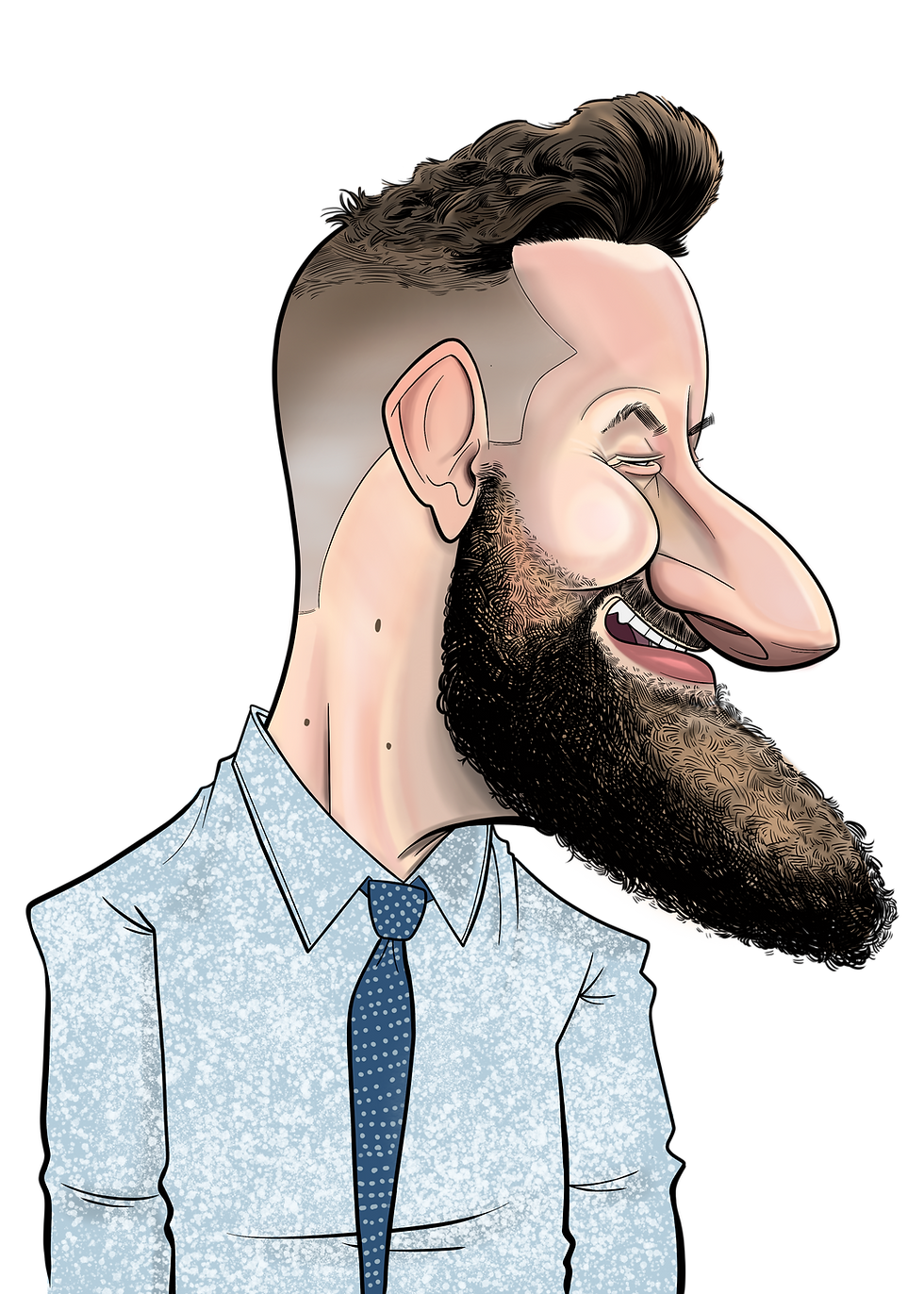
Howdy-Doo fellow caricature artists! I'm super thrilled to have the opportunity to teach you folks about a great caricature tip that I regularly use! This is just one of the many ideas you can apply to caricature.
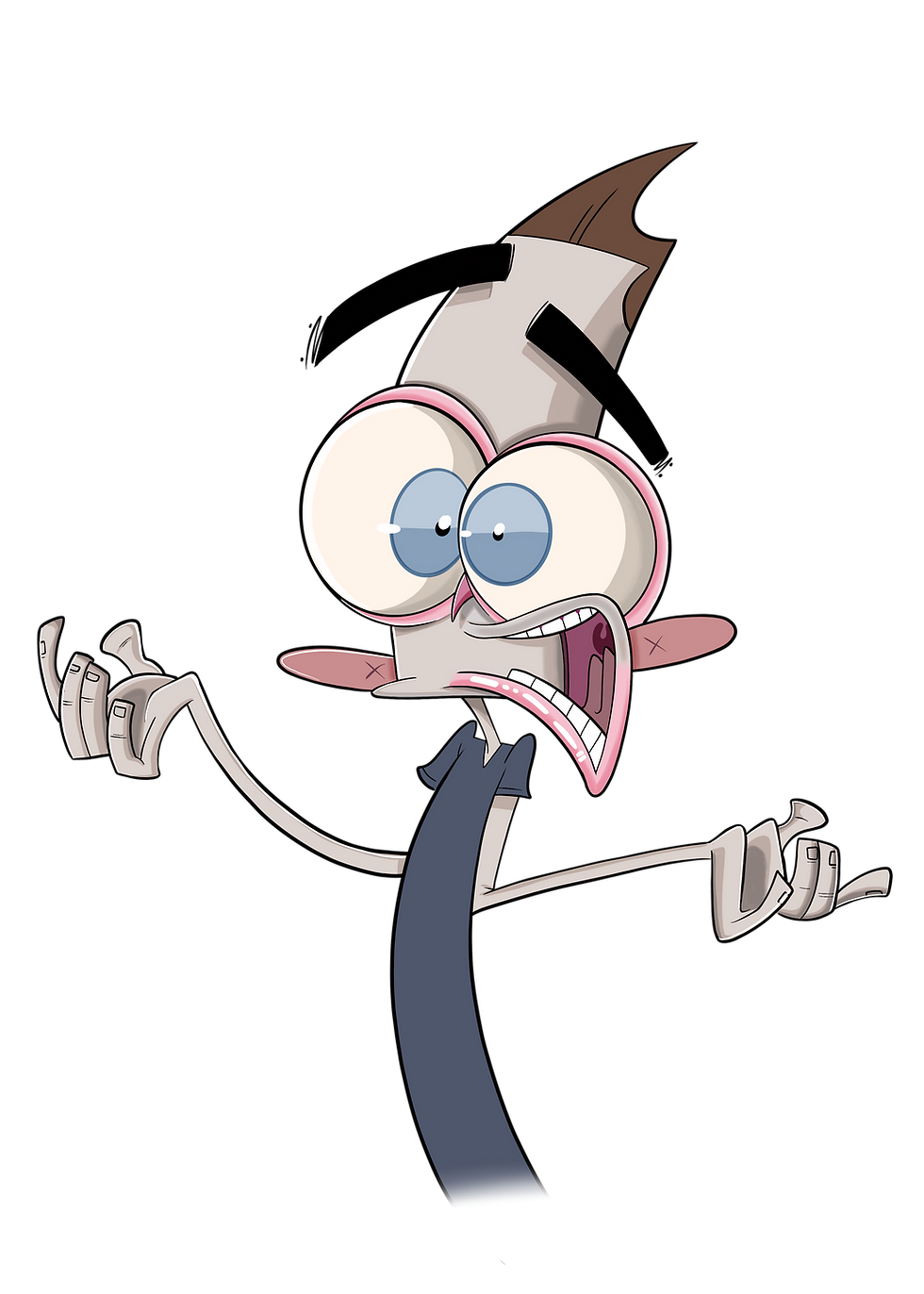
I have always said,
"a brain packed with ideas packs cool caricatures."
Well...I've Actually never said that, but HEY! I'm saying it now. Because it's actually quite true. I would say the most vital part about caricature is having ideas originate from the subject you're drawing. It can be tricky trying to establish an idea or concept that matches with the individual you have to draw. Therefore, it's always wise to collect as many ideas you can along you're caricature journey.
So lets get started!
I call this caricature tip, Direction.
Direction is the gesture of how a shape will flow according to the subject's features. This idea allows a shape to have a certain motion, instead of having the shape seem lethargic or idle. Direction creates a dynamic feel of how a feature can act, which in turn establishes an idea of how you can exaggerate a feature. Direction will also tell you how much you can pull or pinch a feature. By following the shape's direction you will be able to get a sense of how much a feature can stretch or shrink.
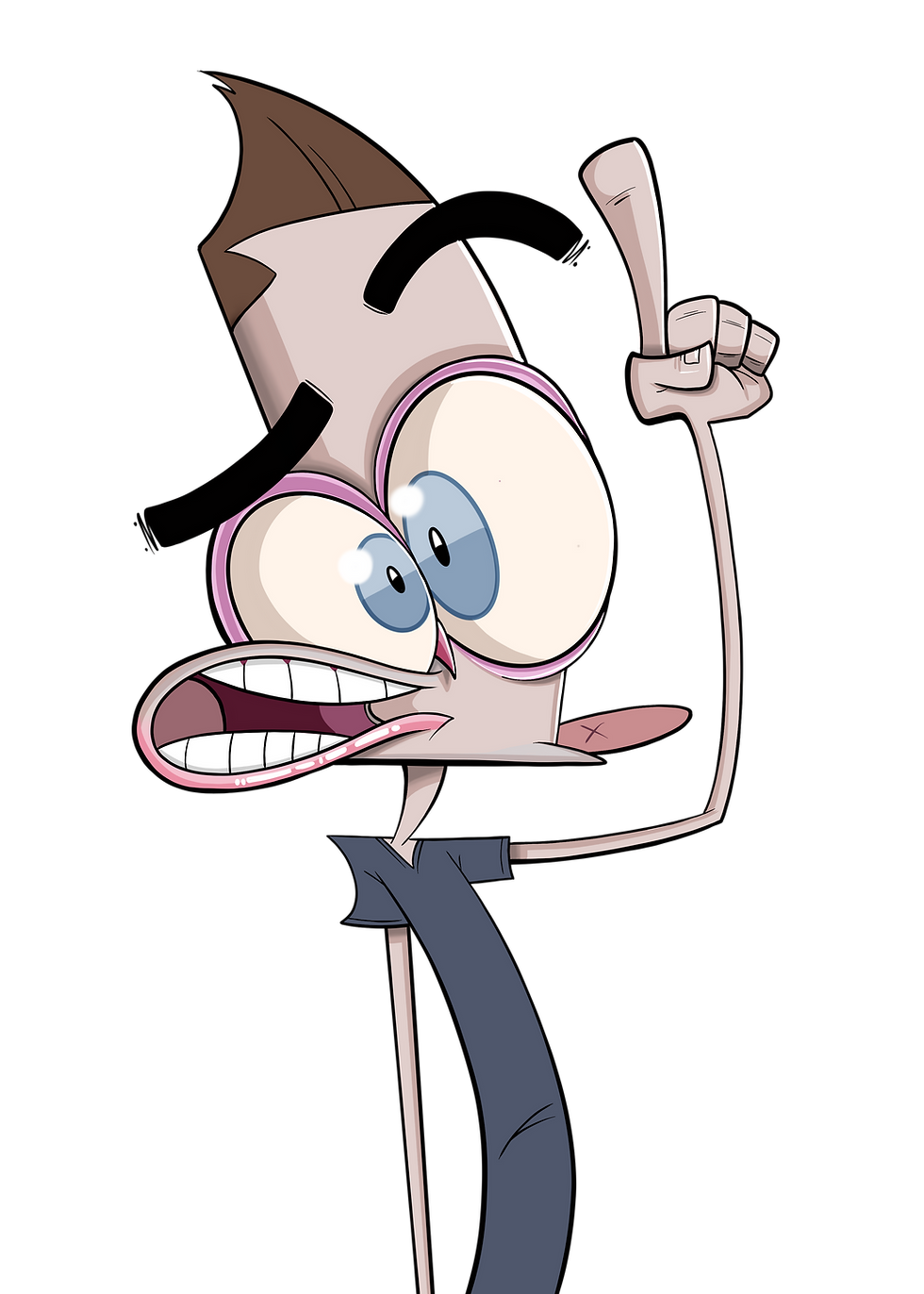
As caricature artists, we know that shapes help us construct a basic form according to an individual. Although, when taking this idea at face value it can lead an artist to create stiff or unbalanced drawings. I have always found it best to appreciate shapes as having a behavior. Shapes can be energetic, sharp and angular or, they can be wispy, curvey, and plump. Sometimes stretchy, pinched, or droopy. Either way, shapes have a certain personality to them and finding the direction in which these shapes act, will give you so many ideas on how to exaggerate them.
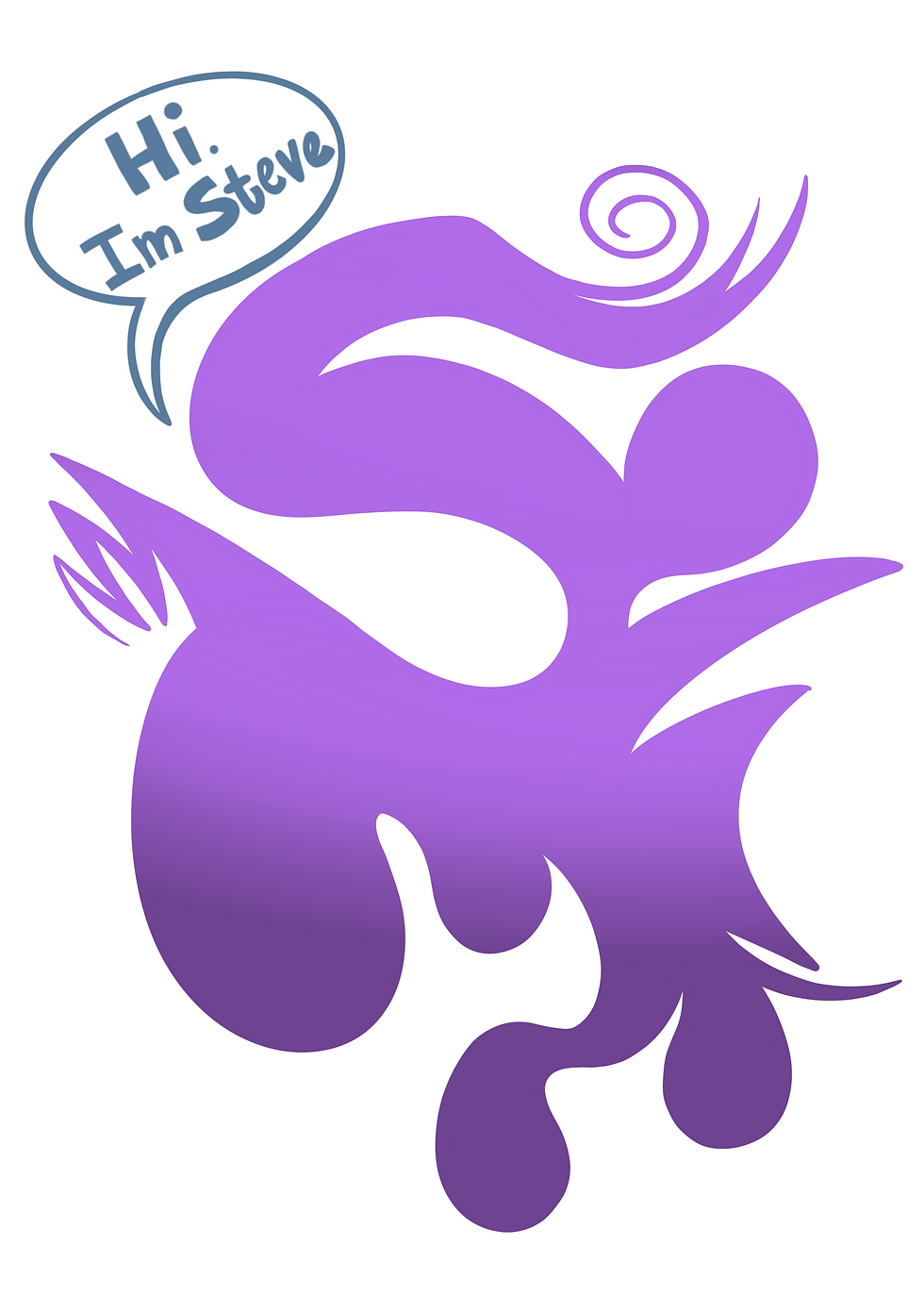
Let's take a look at this, very weird, dynamic shape. No this isn't a Rorschach Test to see if you have an uncontrollable fear over Cinnamon Toast Crunch. No, this shape is to give you a prospective on how a shape can have multiple personalities. As you can see, it has a lot going on, from curvey figures to very sharp angular edges. For demonstration purposes, let's call this dynamic shape, Steve. Of course, we can break Steve down into simple shapes, like circles, triangles, etc. But what happens if we examine how each basic shape behaves within Steve?
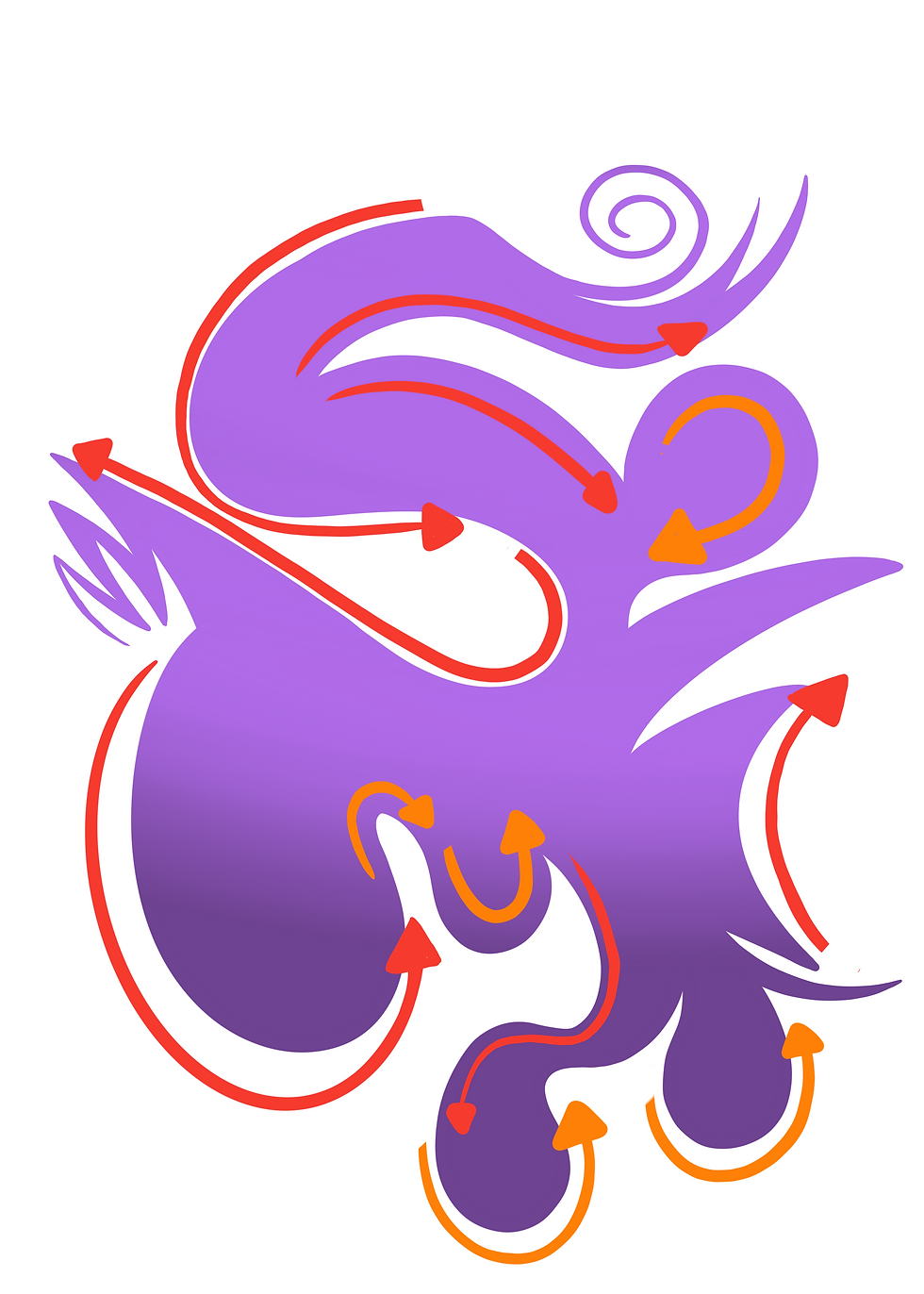
First, let's find the direction of the curves that lay within Steve. The red arrows represent the longest curves in Steve, while the shorter curves are represented by orange arrows. This will help later with what curves to exaggerate shorter or longer.
*Show picture of Steve with red and orange arrows.
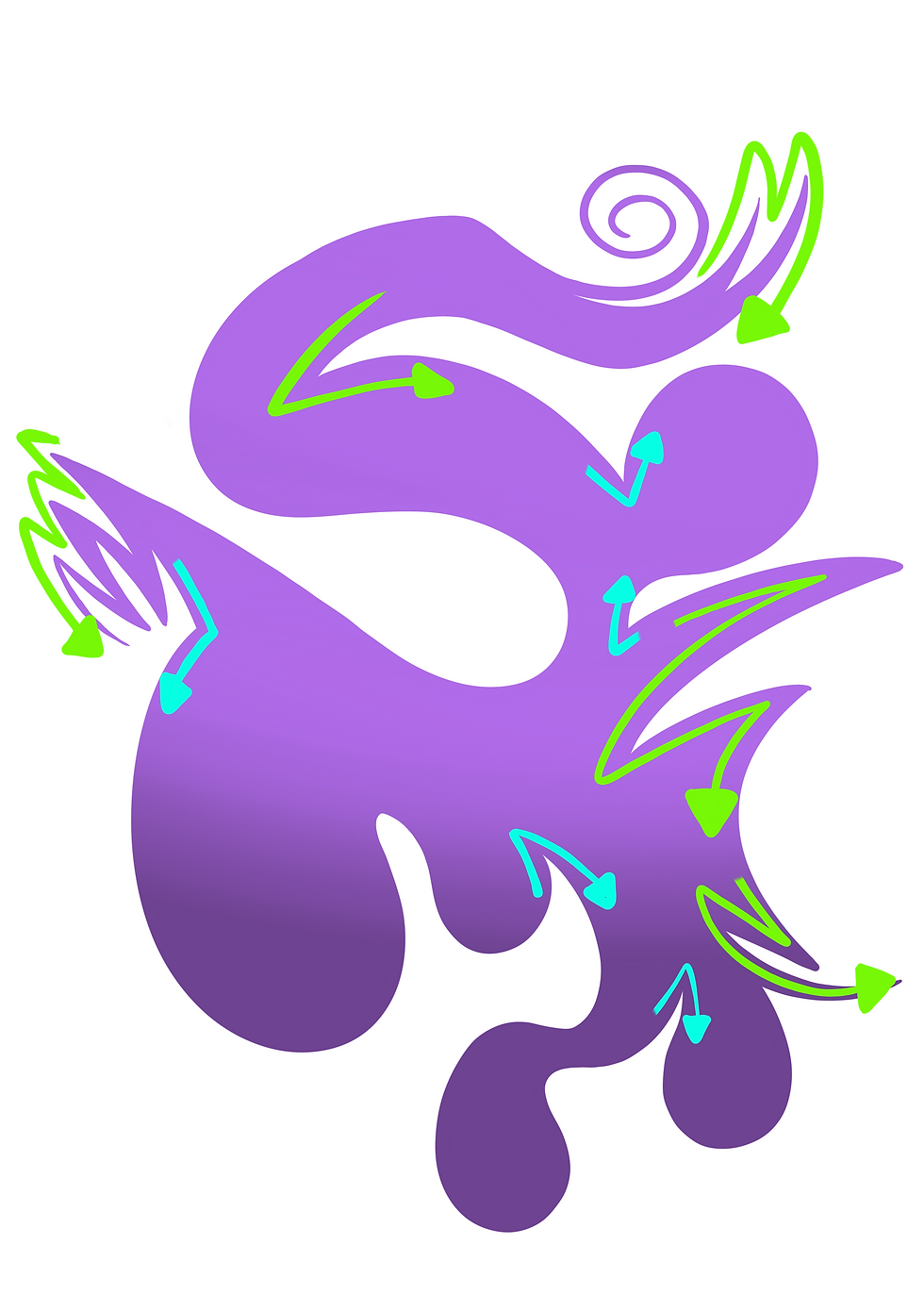
Second, we'll find Steve's angular edges and trace their corresponding directions. The lime-green arrows serve as the longer flowing angles, and the light-blue arrows represent the shorter flowing angles.
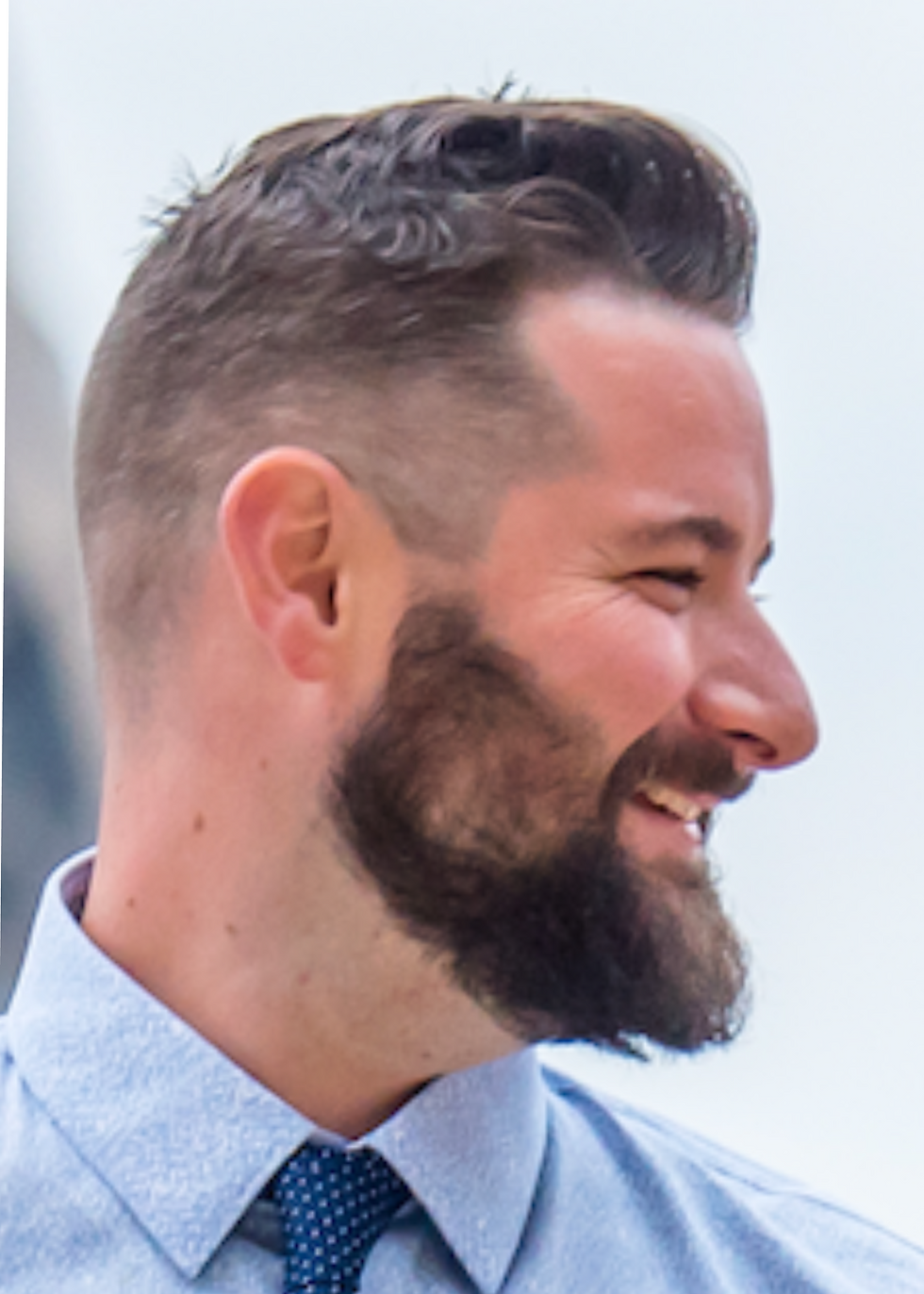
Now Let's put a human face to the test! For today, we are going to be using the famous and glorious face of Dexter Rothchild. Thanks Dex, for letting us use your handsome mug! Now looking at Dex, we can see that he has a lot of distinctive features. A lot of these distinctive features are very curvy and round. You can see the directional lines I pulled for his face. His cheeks and chin are very rounded. While his nose, forehead, brow line have a curve to them. So overall, we have to assume Dex has a very curvy and rounded face. I spotted just a few angles in his face, but the ones that really stood out where his hairline and eye. These directional lines will help you later on what you can extend or decrease for exaggeration.
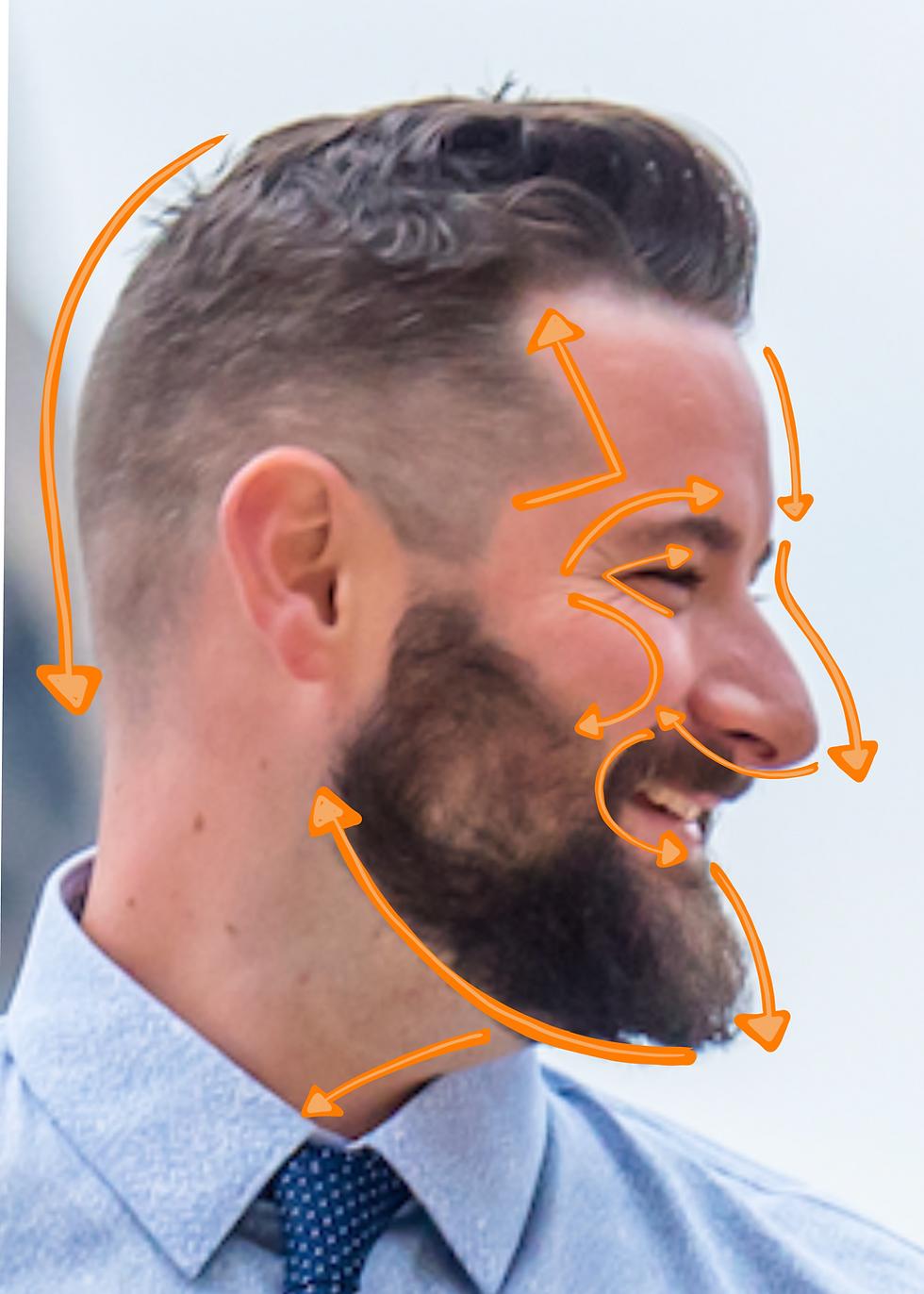
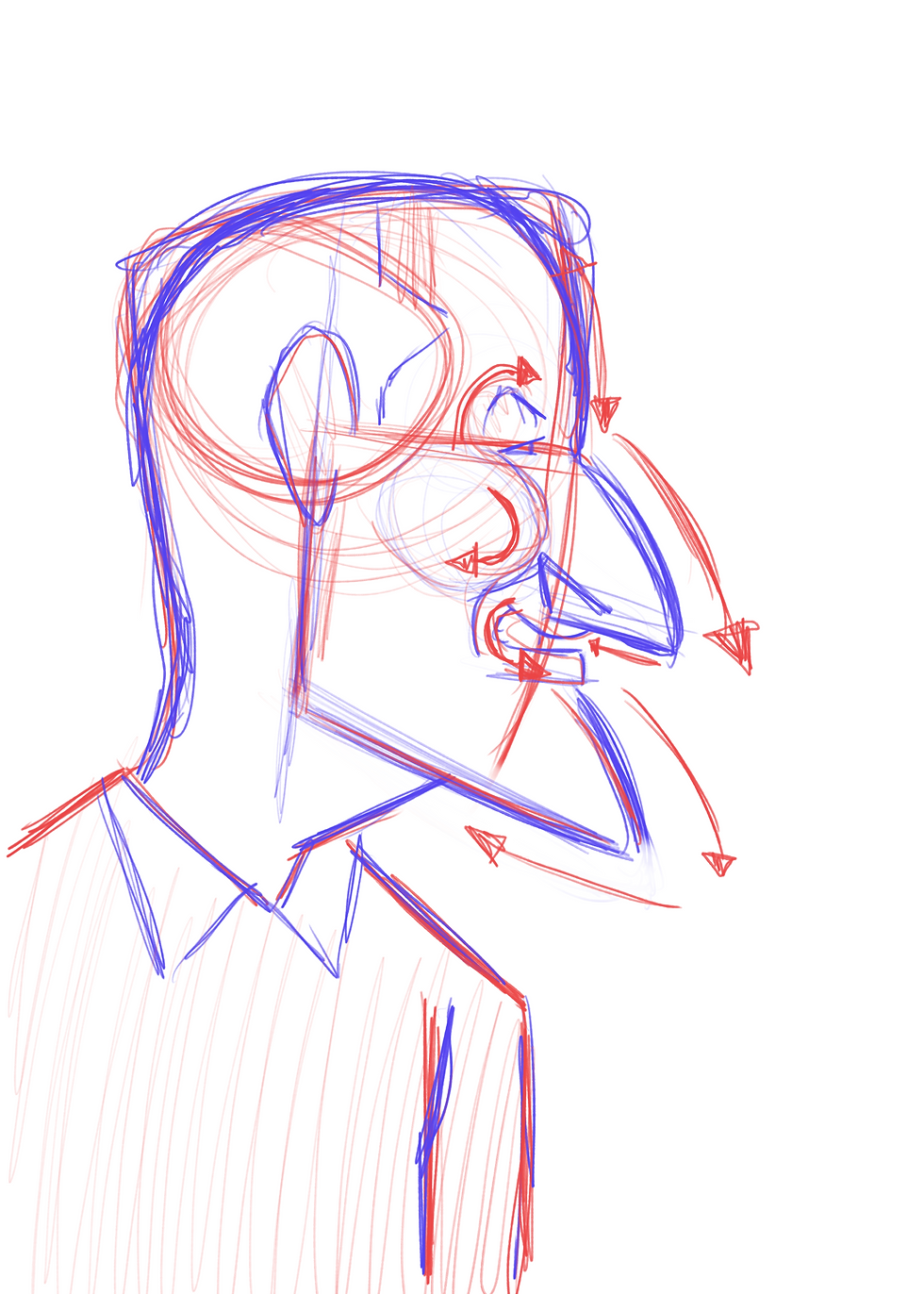
Now lets just lay down a simple foundation of shapes. Something quick and just to give an overall impression of what goes where. Very simple! Usually I'll do this sketch in under a minute. Sketching quick and loose will always help you're drawing seem more balanced. I also marked the directional lines I found. Just giving me a concept for later on
what I can exaggerate.
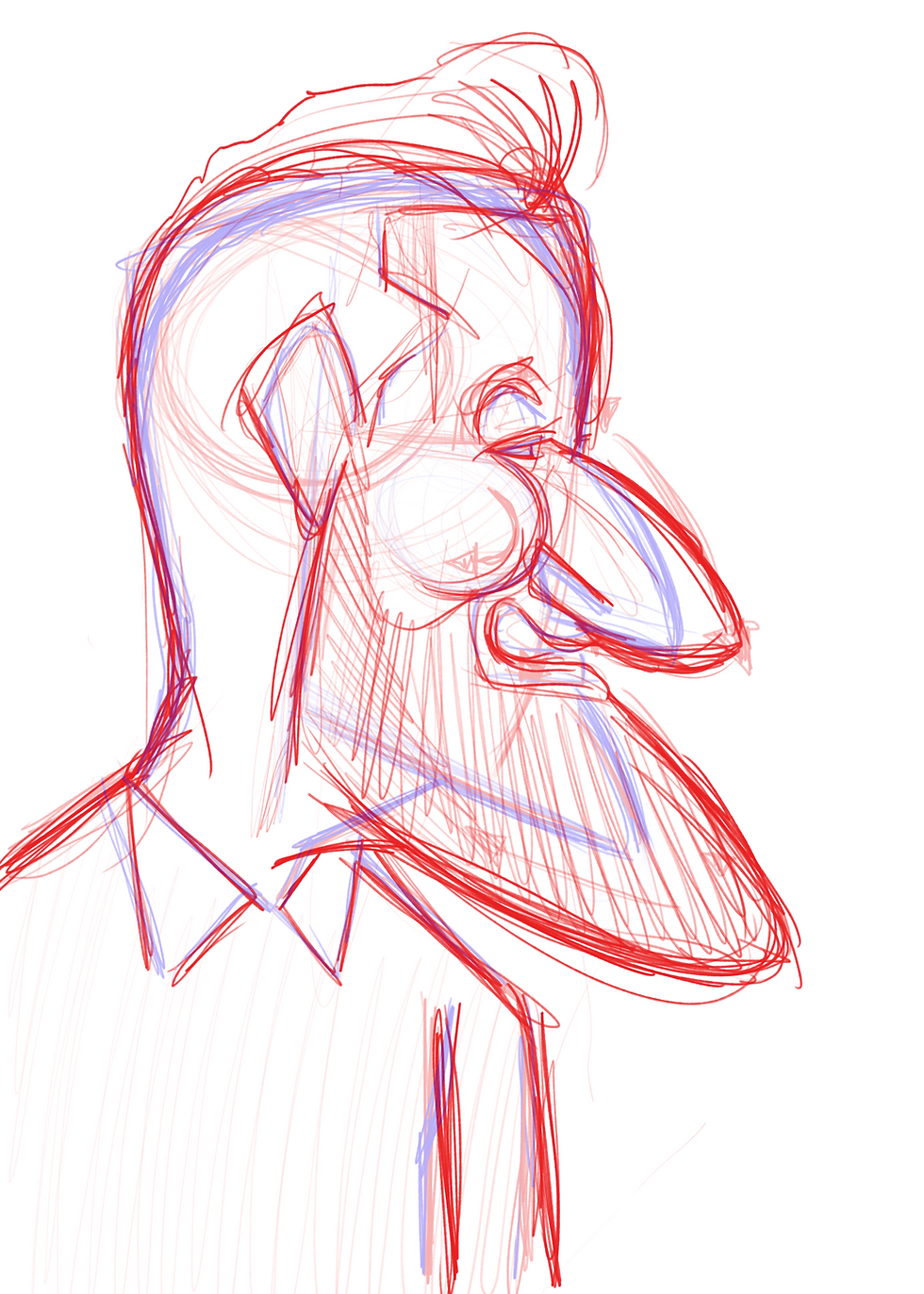
Next I apply the exaggeration. Most of the time, the first initial sketch will already include some exaggeration, but now I can really push it because I have the concept of what direction the features can move. I pull the nose and chin out more, while keeping in mind the curvy motion of these features. The best thing I have found about the concept of direction is that I am able to keep pushing the features because I know exactly how these features will move.
Now, with the final sketch, you can see how I kept the directional lines as with the original reference picture. Of course, I made some of the directional lines longer or shorter depending on the direction of the curve or edge. But I kept the idea of the motion of each feature. For example, having a long curvy shape become longer and curvier.
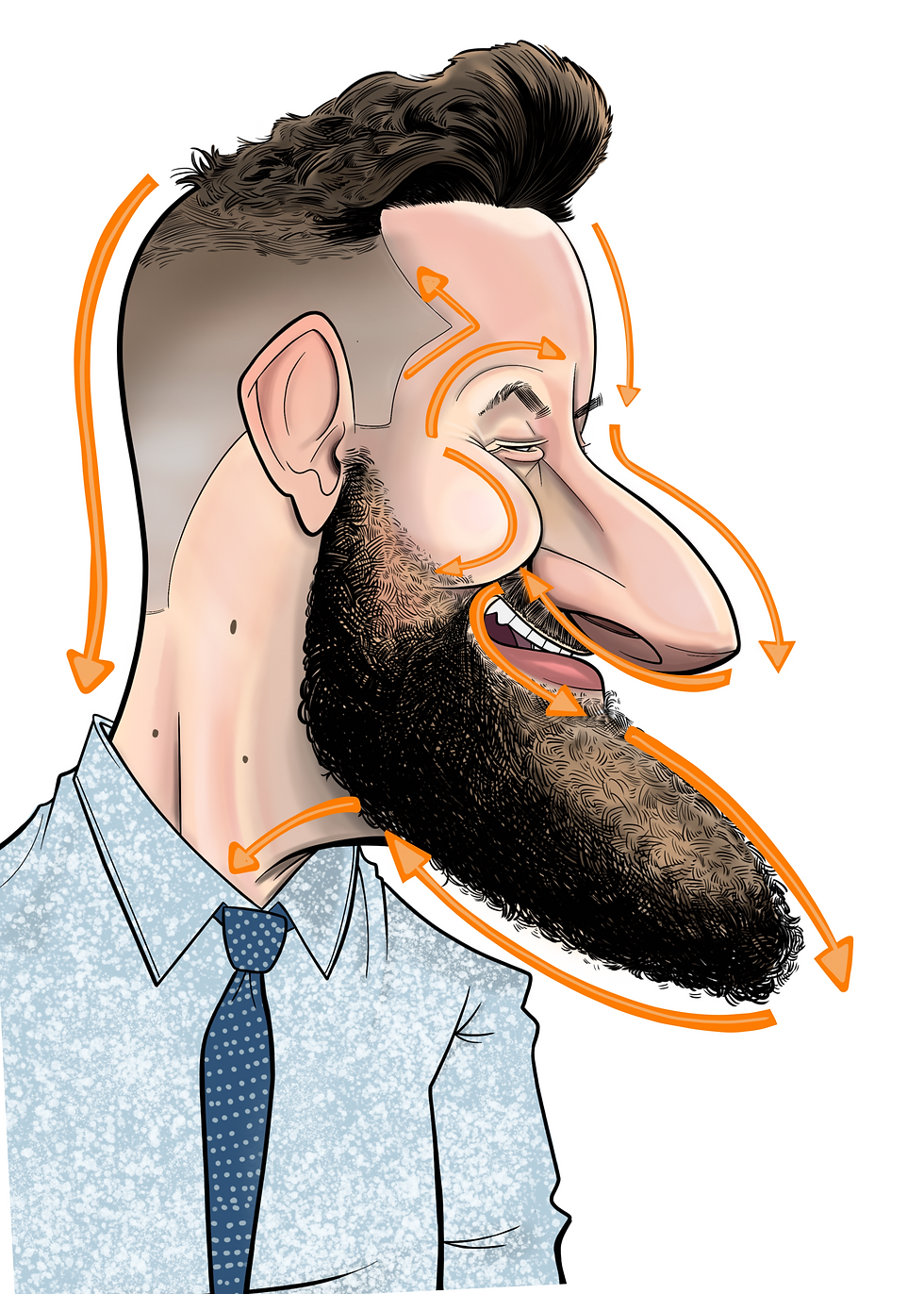

Direction is a really great concept to keep in mind with caricature. You can apply it with basically every face and it will really help you to push features that you never thought you could. Just remember to stay true to the direction of the subject's features, and feel the motion of the shapes during the sketching process. I hope this caricature tip will help you along on your caricature journey. Until next time, folks, take care! -A.J. Jensen For more caricature tips with AJ Jensen be sure to check out his YouTube channel TheToonHeadz. He has multiple videos explaining some concepts that you can apply to your caricatures. You can check out his YouTube Channel YouTube


Great tip on direction it's one of the most overlooked fundamentals when learning caricature! If you're just getting started and want to turn these basics into fun, hands-on experience, check out Wowzers https://wowzers.fun/. They offer interactive caricature activities and creative workshops that make learning both engaging and unforgettable. Whether you're an aspiring artist or just looking for a fun way to sharpen your skills, Wowzers is a great place to grow your talent while having a blast!